Belt 3D printers are a fairly new innovation that, in theory, offers printing of completely unlimited lengths. But is it just a fad, or is there actual utility in these?
We’ll dive into the current top belt printers and some extra info on where they’re currently being used. Interestingly, when I interviewed Dr. Adrian Bowyer for 3DSourced a couple of years back, he felt at the time that the long-term future of 3D printers could be a fast delta printer with a conveyor belt print bed. While CoreXY printers have taken some of the shine away from delta’s fast printing selling point, these belt printers could still be the future!
To help you navigate these, we’ve recommended the best conveyor belt printers that you can buy, as well as some more experimental kits out there:
This unique design incorporates a treadmill-like printer bed, enhancing productivity and allowing for extra-long model printing.
With a Nylon-based heated bed for excellent adhesion and an ultra-silent motherboard, this printer promises efficiency and quiet operation.
1. Creality CR-30 3DPrintMill
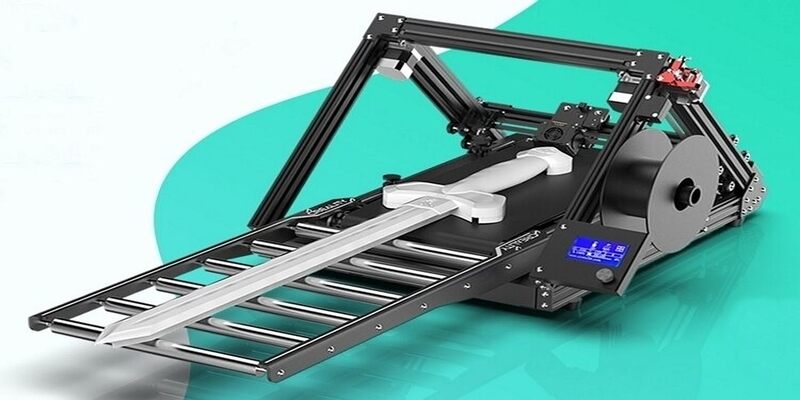
Pros
Very sturdy and robust.
Ultra silent motherboard and chip for quiet printing.
Strong adhesion and well-balanced conveyance.
Cons
The interface can feel outdated.
The Creality CR-30 3DPrintMill is the most popular conveyor belt 3D printer on the market. It has a stable CoreXY precision structure with isosceles right triangle support. This helps improve the sturdiness and robustness and general smoothness of the printer, though there still will be limitations with belt printers in these areas.
The conveyor belt itself is made of wear-resistant nylon for durability, enabling the printer to work to a high level over long periods. It has strong adhesion and well-balanced conveyance, and finished prints are easy to remove. There’s also a removable extension bracket to prevent models from falling during printing.
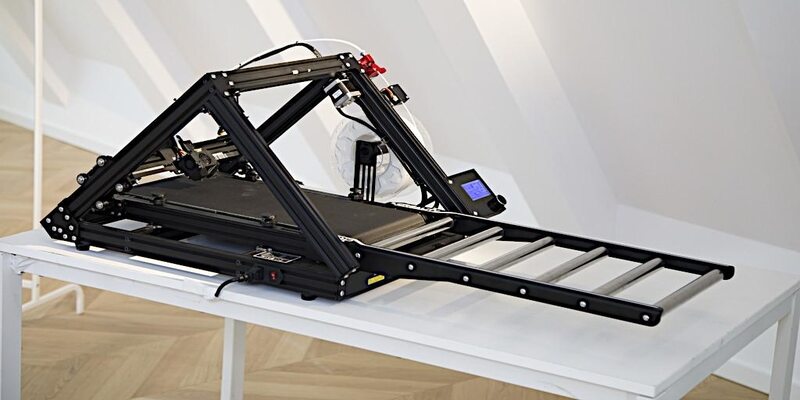
This belt 3D printer has an all-metal frame to minimize vibrations from the Core-XY motion gantry. The nozzle can reach temperatures of 240°C, so while you can print TPU and PETG, you can’t print higher-temp filaments.
The printing bed has a max temperature of 100°C. You can easily level the bed using the knobs on the edges of the conveyor belt.
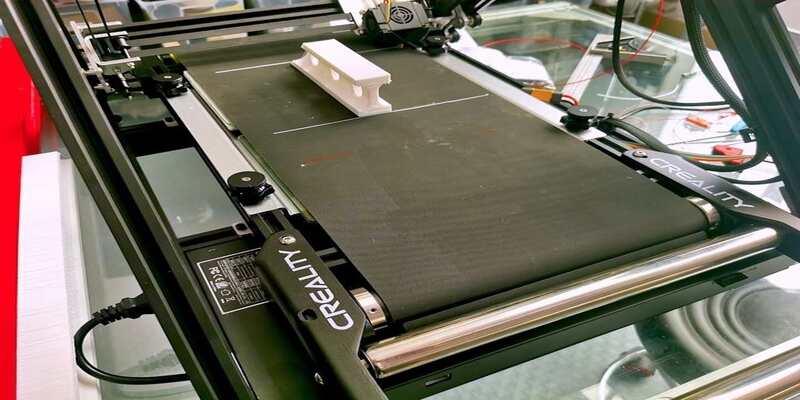
Creality say the CR-30 3DPrintMill can print for over 200 hours continuously. this printer is capable of printing for over 200 hours at a time.
This printer comes in four separate parts – the base, front, rear, and control panel – but it’s simple to set up and should only take half an hour or so to get started.
For slicing, the CR-30 comes with the CrealityBelt slicer software included. CrealityBelt lets you slice unlimited-length models, as well as multiple models in a line, and the package includes ready-made slicing profiles developed by Tom Jackson, though you can find many other slicer profiles here.
2. Blackbelt 3D – For Industrial Settings
- Price: Upon inquiry
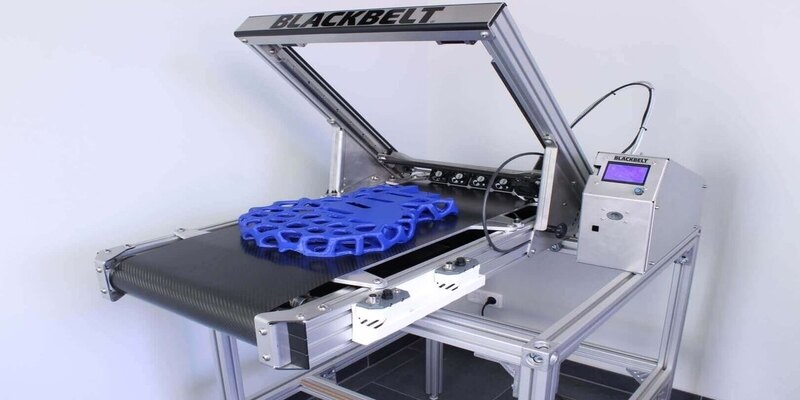
Pros
Comes with Bowden set up standard, working well with rigid materials.
Adjustable angles.
One of the best on the market.
Cons
Very expensive.
List one of the cons/drawbacks
Blackbelt was the trailblazer of 3D belt printing with the release of its own model back in 2017, and it’s still one of the best on the market.
There are two purchasing options for the Blackjack 3D conveyor belt printer. You can choose the standalone version, which consists of the printing platform with the controller and support construction, or you can go for the roller table version, which has an extended support table capable of supporting prints of two meters.
You can also add a VarioDrive setup extension to your printer. It comes with a Bowden setup as standard, which works well with rigid materials. If you go for the VarioDrive setup, you’ll be able to print with a wide range of flexible materials, as well as nylon and carbon-filled filaments.
There is a choice of angles from 15 to 45 degrees, so you can adjust it based on your needs. The belt is carbon fiber, so it’s lightweight yet durable.
While this is an exceptionally high-quality machine, it doesn’t come cheap. You have to request a quote from the company before you can get a firm price, but the average cost is around $10,000. The higher price means that this machine is best suited to business and industry, whereas the Creality machine is more open to hobbyists.
3. iFactory One
- Price: $999
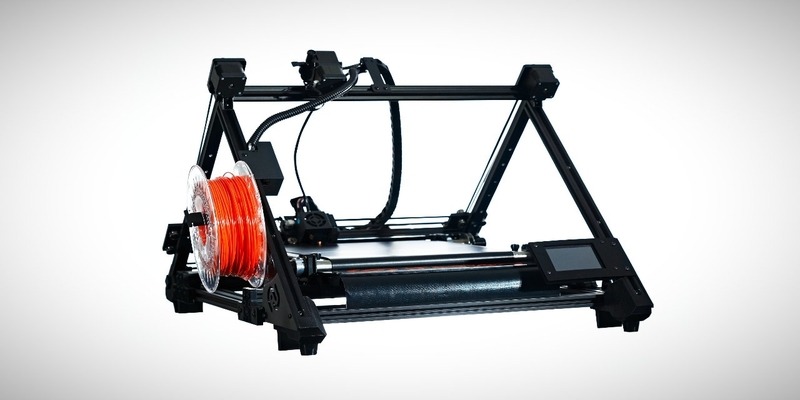
Pros
Durable.
The nozzle and other parts are custom-made.
Comes with a webcam and OctoPrint software built in.
Cons
Poor quality components.
The iFactory One 3D printer belt was released around the same time as the Creality machine and has some nice features. The belt was made in conjunction with one of the world’s biggest belt manufacturers for optimum durability, the nozzle and other parts are custom-made, and the drone also has Raspberry Pi, a webcam and the OctoPrint software built in.
This conveyor belt 3D printer will set you back $999.
4. The White Knight
- Cost: around $2,000
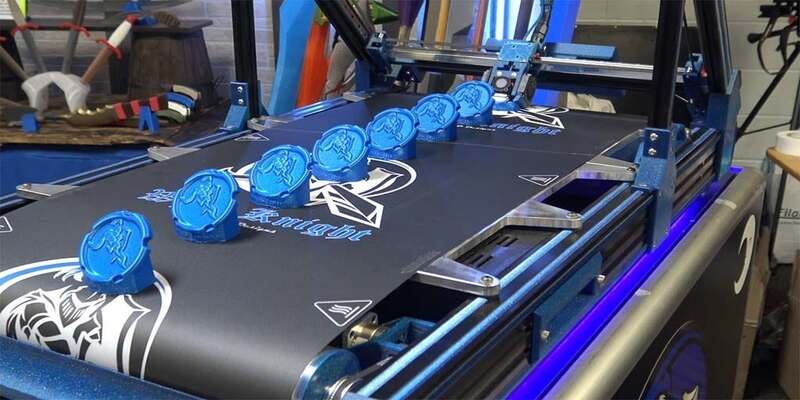
Pros
Open-source DIY project.
Fun and challenging project.
Cons
Quality isn’t as good as with Creality or Blackbelt 3D.
Whereas the printers we’ve profiled so far are complete models you can purchase as one, the White Knight is an open source DIY project in which you build the printer yourself. The total cost comes to around $2,000, and you don’t get the quality you get with the Creality or Blackbelt 3D printer belt machines. However, it’s certainly a fun and challenging project for 3D printing DIY enthusiasts and comes with a lot of community support.
How Belts Work In 3D Printers
Conveyor belt printers differ from Cartesian and Delta printers as while a standard Cartesian frame has its top tilted sideways, 3D belt printers have a CoreXY gantry in which one side is tilted down. The angle is typically 45 degrees, although it can be smaller.
If you’re unsure what these mean, read: the main types of FDM 3D printer
In a 3D belt printer, the machine’s X and Y axes are rotated at an angle rather than being parallel to the build plate. The Z-axis build plate itself is placed with a conveyor belt, meaning there is infinite length print potential along the Z-axis.
During printing, the belt pulls prints away from the nozzle. The hot end is suspended in the CoreXY gantry and travels within a tilted XY plane, while the belt travels along the Z-axis, meaning it can, in theory, print objects of infinite length.
Of course, prints would eventually fall off the belt, but this can be avoided simply by having a bucket to collect the models in.
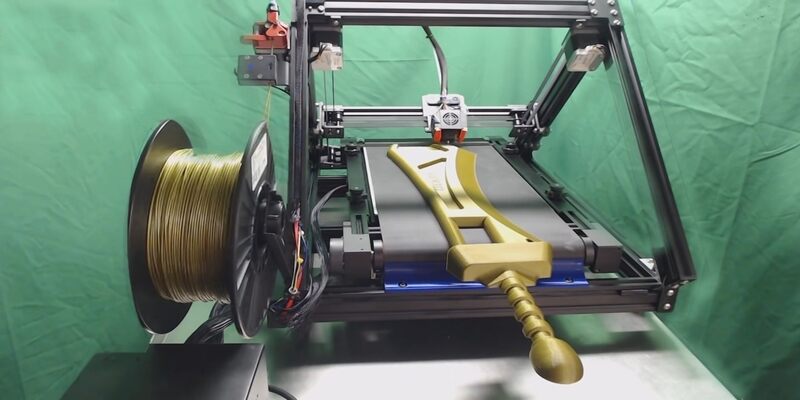
Uses & Applications
Continuous printing offers two main benefits:
- The ability to mass-produce small models non-stop.
- The ability to print extremely long models in one piece.
This means they’re particularly well suited for semi-automated or fully automated production in more professional settings.
There’s also no loss in average print speed, print removal is automatic and hassle-free, and it’s also possible to have a partially heated printing bed.
There are also some hobbyist uses still! These include:
- Cosplay props, weapons like swords and staffs, and helmets.
- Long sculptures, portraits, and other artistic pieces.
However, There Are Reasons NOT To Buy A Belt 3D Printer
It’s important to consider the limitations when purchasing a conveyor belt 3D printer.
For example, they’re still expensive. Though the CR-30 3DPrintMill runs just above $1,000, more advanced and reliable belt printers like the Blackbelt will run you 10x that price.
They’re still relatively slow, and because of the print bed material, often cannot print ABS. You can’t create glass sheets that roll like a belt, so you’re restricted in the materials, which generally can cause adhesion issues with these types of 3D printers.
But, if a company can crack the issue of adhesion with the belts, and integrate the latest CoreXY advances to hit 500mm/s+ speeds, I think they’ll be adopted much more in the future.
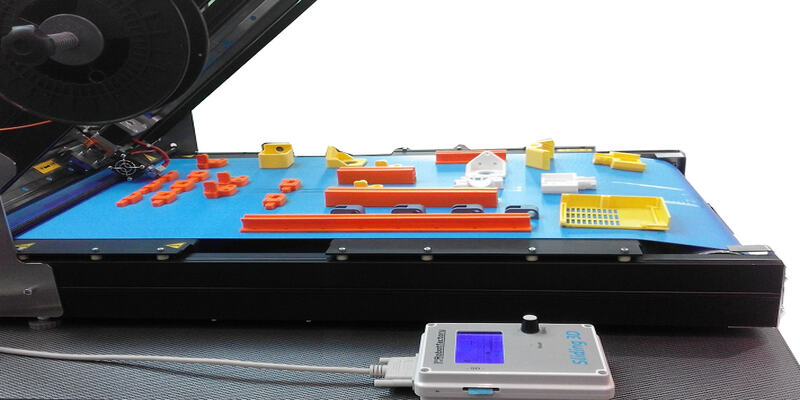
FAQs
Are there any dual extrusion belt 3D printers?
None exist that I could find yet, but you could build one yourself. In this Reddit thread, there’s some great info on this. You could use the existing Creality CR-X slicer profile within Cura with some tweaks, or you can use the IdeaMaker slicer which includes dual extrusion with belt printers. You’d then need firmware like Klipper, and a mainboard that can handle dual extrusion.






